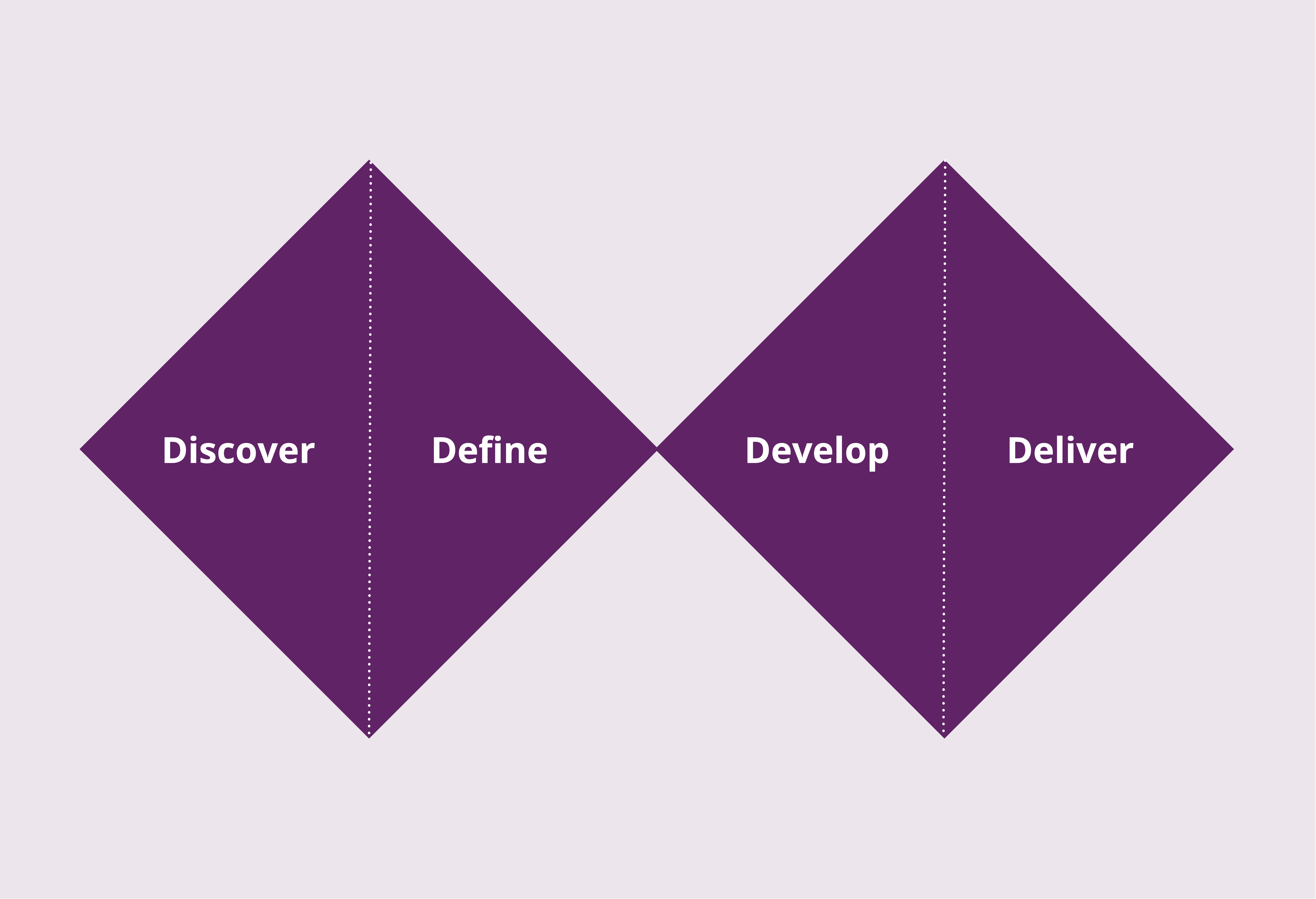Design Principles
The Double Diamond is an internationally recognised structure for guiding the design process. Developed by the UK Design Council in 2004, it is made up of four stages:

The diamonds
The first diamond relates to understanding the problem and includes Discover and Define stages. In taking time to fully grasp the problem, you are in a much stronger position to develop solutions that are appropriate and meaningful.
The second diamond focuses on designing the solution and involves Develop and Deliver stages. Working in a collaborative way ensures that multiple perspectives are considered leading to more comprehensive solutions with a higher chance of success.
It is important to note that the stages of the Double Diamond are visually presented to show in a clear and simple way how the design process works.
The length of time of each stage and the intensity of activity can vary considerably. For example, if you are starting from scratch with a new service, the Discover phase may take place over a longer period of time. This might be much shorter for the redesign of an existing service.
The process is not necessarily linear. You may find that you go through iterative loops where you return to earlier stages as you progress through the service design process. For example, you may be in the Develop phase and realise you need to conduct more user research
The shape of the diamonds is also significant
The flaring out of Discover and Develop stages represents a divergent thinking approach, where you are thinking broadly and expansively to inform your thinking (Discover) and to generate and test possible solutions (Develop).
The focusing in for the Define and Deliver stages suggests convergent thinking. Here will you will be making sense of what you know and make decisions on what problem to focus on (Define) and what solution to take forward (Deliver).
The Double Diamond is underpinned by a number of key principles:
- Being person-centred – with people at the centre of the process and involving others who can interact with or deliver your service
- Questioning – having a curious and inquisitive mindset to find out more and being open to input and feedback from others
- Collaborating and co-creating – involving people and other stakeholders to inspire thinking and to ensure diverse perspectives are heard
- Communicate visually – to make information more accessible to others
- Test and learn – prototype your ideas as soon as possible and test them with people to learn what works, reduce risk of failure and increase the chances of success.
There are a wide range of tools available for each stage of the design process. It is important to think about what you are seeking to achieve and then to find or create a tool that would help you to do that.
